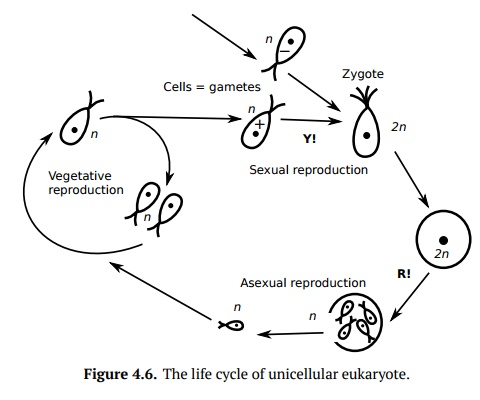Chapter: Introduction to Botany: Multicellularity, the Cell Cycle and the Life Cycle
Life cycle of the Unicellular Eukaryote
Life cycle of the Unicellular Eukaryote
The life cycle of a
unicellular organism begins with syngamy: one cell unites with cell having
different genotype. To recognize each other, cells which are going to fuse (gametes) frequently use surface
proteins, like cells of our immune system. If these proteins are same (same
genotype), gametes will not fuse. Two fused gametes form a zygote, new diploid
organism. Many unicellular protists use a zygote as a wintering stage. On
spring, zygote splits with meiosis, and four haploid spores start four new organisms which reproduce all summer with
mitosis (vegetative reproduction, cloning):
X + X - > XX -
> I + I + I + I - > X - > I + I - > ...
Despite its
simplicity, this life cycle has all three possible ways of reproduction: sexual (ploidy doubles: syngamy), asexual (ploidy reduces: meiosis of
zygote)and vegetative (ploidy does
not change: mitotic divisions). To mark these ways of reproduction, we will use
“R!” shortcut for the meiosis, and “Y!” shortcut for syngamy (Fig. 4.6). It should be noted that before every mitosis
(and meiosis), cell DNA goes through duplication (S-stage of the cell
cycle).

Related Topics